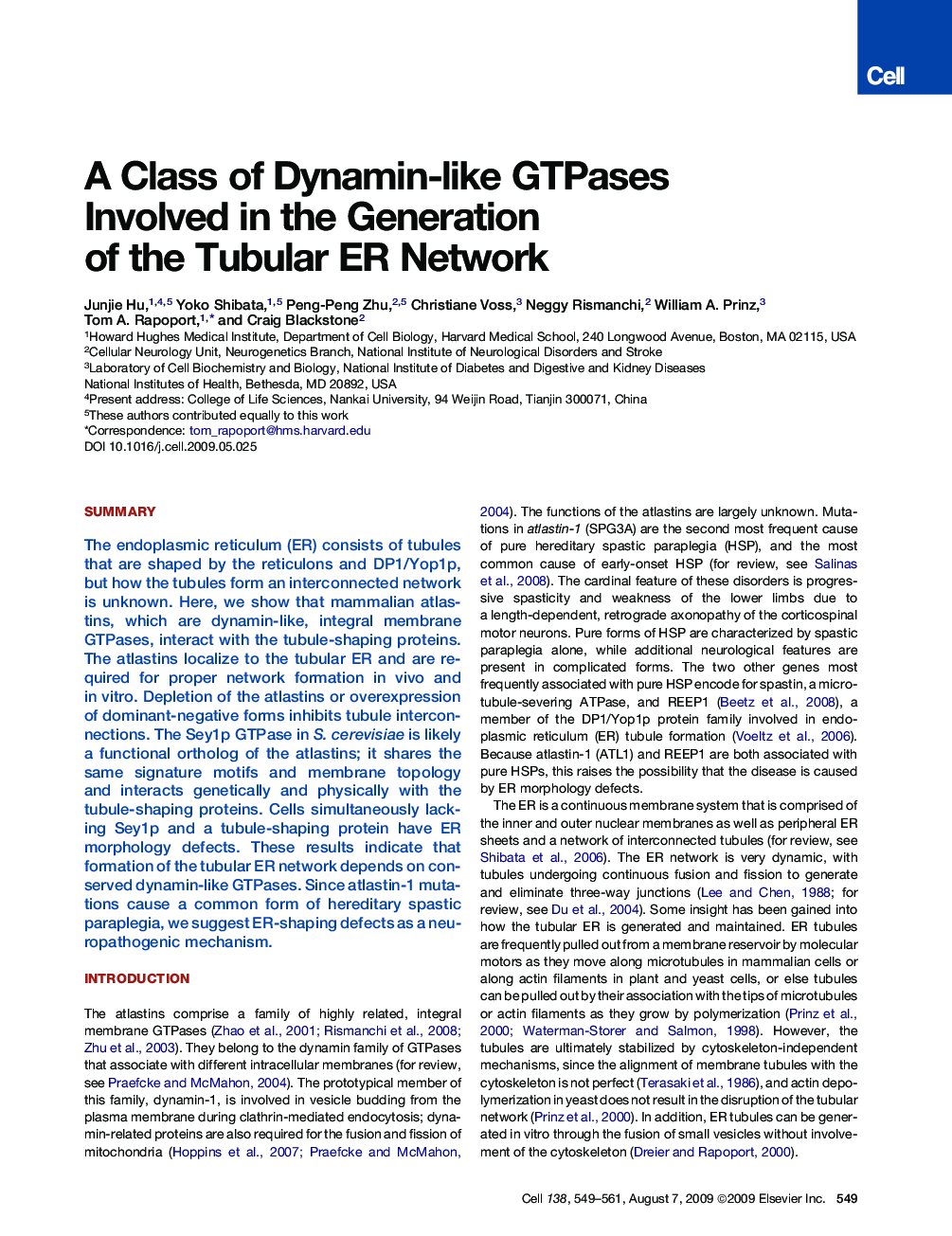| Article ID | Journal | Published Year | Pages | File Type |
|---|---|---|---|---|
| 2037015 | Cell | 2009 | 13 Pages |
SummaryThe endoplasmic reticulum (ER) consists of tubules that are shaped by the reticulons and DP1/Yop1p, but how the tubules form an interconnected network is unknown. Here, we show that mammalian atlastins, which are dynamin-like, integral membrane GTPases, interact with the tubule-shaping proteins. The atlastins localize to the tubular ER and are required for proper network formation in vivo and in vitro. Depletion of the atlastins or overexpression of dominant-negative forms inhibits tubule interconnections. The Sey1p GTPase in S. cerevisiae is likely a functional ortholog of the atlastins; it shares the same signature motifs and membrane topology and interacts genetically and physically with the tubule-shaping proteins. Cells simultaneously lacking Sey1p and a tubule-shaping protein have ER morphology defects. These results indicate that formation of the tubular ER network depends on conserved dynamin-like GTPases. Since atlastin-1 mutations cause a common form of hereditary spastic paraplegia, we suggest ER-shaping defects as a neuropathogenic mechanism.
